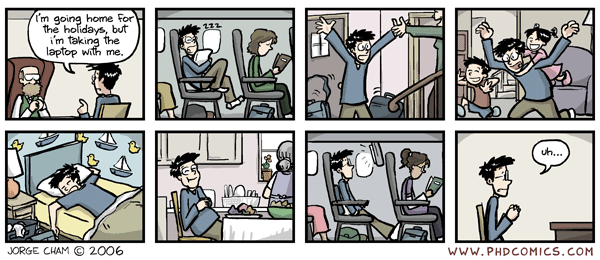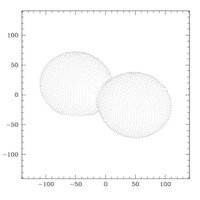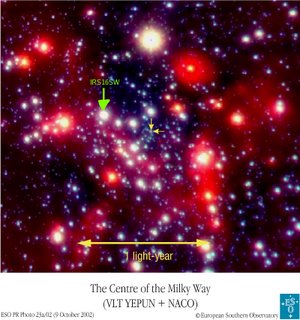Rubik's Cubes
Rubik's cubes are not really all that difficult to solve. You just need to have an algorithm, and to follow it. It was amazingly difficult to find Rubik's cubes in stores this Christmas season, thanks to Will Smith solving one in The Pursuit of Happyness. It really gets me that people think that solving a Rubik's cube is "impossible," or that only "smart" people can do it. It is much like many older people with "technology" (i.e., computers): they decide it is difficult and they do not know how to do it, and like any self-fulfilling prophecy, the task becomes insurmountable.
While it does take a calculating mind capable of 3-D visualization to invent/discover complicated moves that move around certain pieces in a particular way while not disturbing other certain pieces, it takes a much less creative mind to simply follow directions and to figure out which order to apply these moves in. I am in the second category: I do not have the patience or the foresight to come up with complicated maneuvers, but I can look at a cube and figure out what needs to be done in order to solve it. Different people use different algorithms for solving Rubik's cubes. For the classic 3-by-3-by-3 cube, I choose a face (usually the yellow) to start on. I first get the four yellow corners in place, and correctly oriented. You can tell when the four corners are in the correct place when the yellow side is on the same side as the yellow center and the other-colored side (such as, say, blue) is on the same side as the other-colored (e.g., blue) center. I then get the yellow edge pieces in place, with the correct orientation. My next step is to put the four white corner pieces in the correct locations (these being the four remaining corner pieces). Once these four corner pieces are in place, I rotate them so that they have the correct orientation; I usually do this by "storing" one of the white corner pieces in a yellow corner spot while twisting the others around. I then take care of the white edge pieces; it usually possible to get them all in both the correct location with the correct orientation, but sometimes one will have the wrong orientation. This leaves the four other non-yellow and non-white edge pieces, which are easy to move to the correct positions. Sometimes I am left with a pair of edge pieces in the correct locations but with the wrong orientations; correcting this is the only fancy-schmancy "magical" scripted move I use. If you know how to solve a 3-by-3-by-3 Rubik's cube (3x3x3? I'll call it a 33), then the 2-by-2-by-2 (a 23) is easy because it is just like solving the corners of a 33 one. I haven't quite yet figured out how to solve the 43 one, which I got for Christmas, though the algorithm I am currently trying is to basically try to reduce it to the 33 case, which I know how to solve. First, I want to get all of the 2x2 centers together, since the lack of fixed centers in the 43 cube is one of the reasons it is so tricky. For example, in a 33 cube, if the yellow and white faces in the solved cube are opposite one another, then it is impossible to make the center yellow and white pieces be on adjacent faces. This is not the case with the 43 cube. Having completed the step of consolidating the 2x2 centers—with the correct relative orientations—I now want to gather all of the edge pieces together. That is, there are two edge pieces that have blue and white on them, and I would like for them to be next to one another such that the two blue sides are adjacent and the two white sides are adjacent. I have not yet done this part, but I think I know how to. Once I have this done, the 43 cube will essentially be reduced to the 33 case: it will have 2x2 centers instead of fixed single centers and two pieces per edge instead of one, but if I treat these groups of pieces like single units, I can solve it like I would a normal 33 cube. At the end, though, it will be possible that, for instance, one edge will be flipped relative to its neighboring centers, which is not possible in the 33 case.... but I'll wait until I get there to deal with that.
If you know how to solve a 3-by-3-by-3 Rubik's cube (3x3x3? I'll call it a 33), then the 2-by-2-by-2 (a 23) is easy because it is just like solving the corners of a 33 one. I haven't quite yet figured out how to solve the 43 one, which I got for Christmas, though the algorithm I am currently trying is to basically try to reduce it to the 33 case, which I know how to solve. First, I want to get all of the 2x2 centers together, since the lack of fixed centers in the 43 cube is one of the reasons it is so tricky. For example, in a 33 cube, if the yellow and white faces in the solved cube are opposite one another, then it is impossible to make the center yellow and white pieces be on adjacent faces. This is not the case with the 43 cube. Having completed the step of consolidating the 2x2 centers—with the correct relative orientations—I now want to gather all of the edge pieces together. That is, there are two edge pieces that have blue and white on them, and I would like for them to be next to one another such that the two blue sides are adjacent and the two white sides are adjacent. I have not yet done this part, but I think I know how to. Once I have this done, the 43 cube will essentially be reduced to the 33 case: it will have 2x2 centers instead of fixed single centers and two pieces per edge instead of one, but if I treat these groups of pieces like single units, I can solve it like I would a normal 33 cube. At the end, though, it will be possible that, for instance, one edge will be flipped relative to its neighboring centers, which is not possible in the 33 case.... but I'll wait until I get there to deal with that.
The 5-by-5-by-5 cube is not mine to play with (and I'm not allowed to mess it up)*, but I am guessing that it is similarly reducible to some combination of the 33 and 43 cubes. Because it has fixed centers (thanks to the odd number of pieces per edge), it does not suffer from the same orientation issues as the 43 cube.
Apparently the original Rubik's cubes and the newer "retro" cubes have opposite faces differing by yellow: red is across from orange, blue is across from green, and white is across from yellow. The Rubik's cube I learned how to solve first, though, had blue and white across from one another (and yellow and green across from each other), so I still get mildly confused when I see an edge piece with both blue and white on it.
The 23 cube is notoriously stiff and difficult to move. This one in particular is also difficult to solve because the orange and red faces are nigh indistiguishable; I have colored the red squares red with a red Sharpie, but this now means that anyone who plays with it will be repaid with red fingertips. This 33 one is brand new, and amazingly smooth and easy to twist and turn. (I in fact bought it to replace no fewer than four 33 cubes that had been used and taken apart so much that none of them moved well anymore, and most of them had stickers of indiscernible color.) The only disappointing part about the new 33 cube is that the orange color is a rather icky orange. The 43 and 53 ones are monstrous and difficult to handle; note also that the more pieces a cube has, the smaller the individual pieces are. The 43 one one seems more poorly constructed than the 53 one; the stickers are not exactly in the middle of the squares, and already one piece has simply popped out and had to be stuck back in.
By the way, if you know where I could obtain a 1-by-1-by-1 Rubik's cube, please let me know. We'd like to complete the collection at the small-n end.
* Playing with Rubik's cubes is really really bad for your wrists, especially if you already have wrist problems induced from RSI (Repetitive Stress/Strain Injury). This means that Rubik's cubes are dangerous to have around if you have RSI and are ... compulsive.










